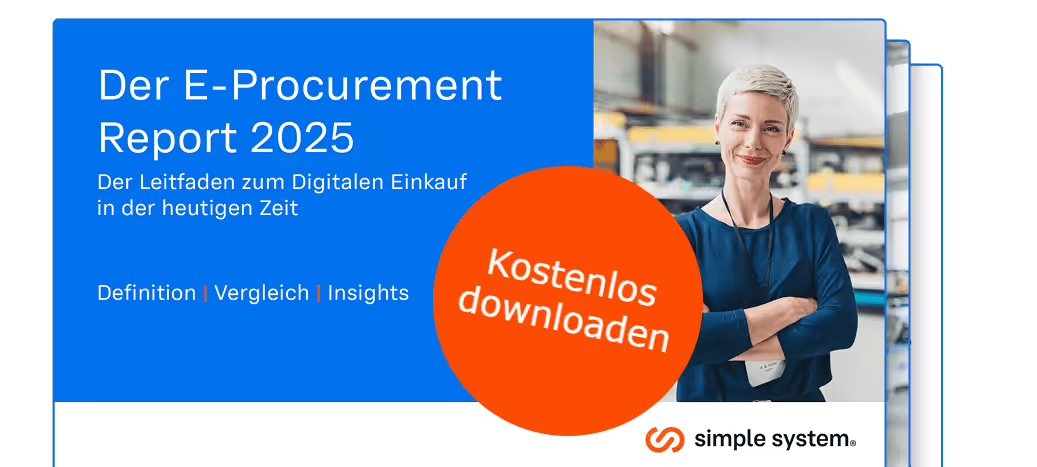Purchasing optimization: Reduce costs & improve procurement processes
Purchasing optimization is an important Success factor for companies. Thanks to efficient processes and strategic approaches, they save costs and increase their competitiveness. Modern technologies and data-driven decision supports raise procurement processes to a completely new level and create new opportunities for increase in value.
Purchasing optimization is an important Success factor for companies. Thanks to efficient processes and strategic approaches, they save costs and increase their competitiveness. Modern technologies and data-driven decision supports raise procurement processes to a completely new level and create new opportunities for increase in value.

What are the key strategies for optimising purchasing?
To optimise both operational and strategic purchasing, companies rely on key strategies. These targeted approaches help reduce costs, streamline processes, and boost competitiveness. Here are the five most common strategies for optimising procurement:
- Digitalization & automation: modernism E-procurement systems and AI-powered tools automate routine tasks. Manual sources of error are eradicated and buyers are given more time to focus on strategic tasks.
- Strategic supplier management: By building long-term partnerships with key suppliers, companies can negotiate better terms, drive innovation and strengthen supply chain resilience. Supplier relationship management (SRM) systems support supplier evaluation and optimization.
- Bundling of needs & cost control: Consolidating orders across different departments enables volume discounts. Regular spend analyses and cost controlling help to find and implement savings potential.
- Sustainability & risk management: The integration of ESG criteria (environmental, social, governance) is becoming increasingly important. At the same time, companies must minimize risks such as supply bottlenecks through proactive risk management and diversified supply chains.
- Transparency & data analysis: Advanced analytics tools allow large amounts of data to be analysed in real time. Buyers therefore make well-founded decisions, benefit from improved forecasts, and can therefore continuously optimise purchasing.
What is the role of supplier relationship management?
Supplier Relationship Management (SRM) systematically enhances relationships with suppliers. SRM systems collect and analyse supplier data to enable continuous monitoring of performance. This helps identify opportunities for improvement as well as potential risks at an early stage.
Supply Chain Management (SCM) fosters close collaboration and effective communication with suppliers. By aligning on shared goals and maintaining regular exchange, companies can increase supply chain efficiency. The key benefit: strategic partnerships drive innovation and create competitive advantages. Moreover, improved supplier selection and long-term relationships lead to better terms and higher product quality.
How can savings be achieved in purchasing volume?
Bundling needs creates economies of scale and strengthens a company’s negotiating position. Long-term supplier partnerships secure favourable terms, such as volume discounts. According to simple system, bundling demand can generate savings of around 1.5%, while supplier consolidation offers potential savings of up to 10%.

Einkaufen & sparen
Erfahren Sie, wie es geht, in unserem kostenlosen E-Procurement-Report. Jetzt kostenlos und unverbindlich herunterladen.
Jetzt lesenWhich tech trends influence management in purchasing?
Digitization is rapidly transforming purchasing management. Companies that embrace innovative technologies gain a decisive competitive edge through improved time management, optimized processes, and data-driven decision-making. Digital transformation enables procurement teams to respond more agilely to market changes and to act with greater foresight.
Which innovative technologies should buyers be aware of?

Digitalization opens up new opportunities to make procurement processes more efficient and strategic through fresh technologies. The most important technologies that buyers should know are:
- artificial intelligence (KI) & machine learning
- blockchain
- Cloud-based procurement platforms
- Internet of Things (IoT)
- Robotic Process Automation (RPA)
AI and machine learning analyse large volumes of data to identify patterns, generate demand forecasts, and optimise purchasing decisions.
These technologies automate repetitive tasks – such as spend classification or supplier evaluation – saving time and increasing accuracy. Digital assistants also support dynamic price negotiations and enable more precise risk assessments.
Blockchain technology provides companies with transparency and security across the supply chain.
It enables seamless tracking of goods from the manufacturer to the end user, helping to reduce fraud. At the same time, it increases traceability and strengthens trust between business partners. Blockchain can also be used to trigger automated orders – for example, when stock levels fall below a predefined threshold.
Cutting-edge cloud solutions such as simple system digitise the entire Procurement process.
They offer simplified access to supplier data and order information, enable seamless ERP integration, reduce manual effort, and increase transparency. These platforms are particularly useful for C-parts procurement, as they streamline processes and significantly reduce costs at the same time.
What is the roadmap for the future of purchasing from 2025?

The roadmap for the future of Shopping 2026 is characterized by the following core aspects:
- Die data-based decision-making is becoming the norm. Companies are increasingly using advanced analysis tools and AI to identify market trends and react more quickly to changes. This agility gives them competitive advantages on lively trading venues.
- Global sourcing remains significant for competitive prices and a wide selection of suppliers. At the same time, the local is winning Procurement Strategy in importance. It makes supply chains more resilient. As a result, companies seek a balance between global reach and local presence.
- Die Cybersecurity is becoming an integral part of the purchasing strategy. As digitalization and connectivity increases, so does the need to protect data and systems from potential cyberattacks. Buyers must consider IT security when making all decisions in the procurement process.
- sustainability and ESG criteria are becoming mandatory criteria in purchasing. Companies integrate environmental, social and governance aspects into their purchasing strategies. This includes not only environmentally friendly supply chains, but also social and ethical responsibility.
- Purchasing is also positioned as a strategicstrategic business function with a direct impact on value creation. Targeted partnerships with suppliers are gaining in importance and creating valuable win-win situations. The focus is shifting from pure cost savings to promote innovation and generate value.
How can I react to planning uncertainties?
Uncertainties in planning can be caused by Scenario analyses and regular verifications be scheduled. Agility is crucial to react quickly to changes. Data-driven decisions and strategic partnerships strengthen adaptability through detailed Predictions and real-time analytics. Clear internal communication ensures that all parties involved can react flexibly to unforeseen developments. The resilience of the supply chain is strengthened.
How can I ensure the effective implementation of purchasing strategies?
To ensure the effective implementation of purchasing strategies, clear objectives and key performance indicators (KPIs) must be defined and regularly monitored.
Close collaboration between departments is essential to align the strategy with overall corporate goals. Training and continuous learning support the purchasing team in executing the strategy efficiently.
It is equally important to leverage appropriate tools, such as procurement software, to automate processes and increase efficiency. A great example of this is simple system. Developing a clear action plan and continuously adapting the strategy to changing market conditions are also critical success factors.
Finally, a centralised purchasing team should be established or strengthened to manage the strategy effectively on a global level and ensure consistent implementation across the organisation.
What are the most common implementation challenges?
The most common challenges in implementing purchasing strategies cover several key areas.
Unclear objectives make it difficult to implement strategies in a targeted manner. A lack of internal collaboration between departments prevents a holistic approach. Inadequate training within the purchasing team can lead to significant competency gaps. The absence of technological support limits efficiency and hinders meaningful data analysis.
Moreover, poor communication with suppliers undermines the development of strong partnerships. Other common obstacles include insufficient resources, lack of management support, and internal cultural barriers – all of which should not be underestimated.









